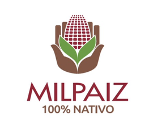
I.- The name of the association or company that will be the owner of the trademark;
II.- The graphic representation or image of the trademark;
III.- The products or services to which the trademark will be applied;
IV.- The common characteristics or qualities of the products or services;
V.- The processes of elaboration, production, packing, packaging or wrapping;
VI.- The indication that the trademark may not be transferred to third parties and that its use shall be reserved to the members of the association or society;
VII.- The mechanisms to control the use of the trademark and compliance with the rules of use;
VIII.- Sanctions in case of non-compliance with the rules of use;
IX.- Indication of the exercise of legal actions for protection, and
X.- Any others that the applicant deems pertinent.
WIPO, for its part, recognizes that the collective mark is adopted in response to a specific need: to associate or group together to offer products or provide common services, allowing these to be perceived as originating not from a company in itself, but from a company as a member or part of an association or collective entity of which other companies are also members.
Can a collective mark be used in conjunction with an individual mark?
Since there is no express impediment in the Law for this to be carried out, it will always depend on the guidelines established in the Regulations for the Use of the collective mark, so that, if there is no such impediment, the owners of the collective mark that have the ownership of an individual mark may place it together on their products.
Collective marks by themselves do not have any visual characteristic that allows them to be identified at first sight, but the Federal Law for the Protection of Industrial Property allows the owners of the mark to use the legend "Registered Collective Mark" next to the mark.
Example of a collective mark:

It is a collective mark, one of the purposes of which is to ensure that the market or consumer identifies and distinguishes the corn product and products associated with the milpa covered under this collective mark as native products that have been produced by small producers in areas of documented distribution, in a traditional manner and respecting their cultural values, and can recognize their origin, quality and characteristics.



